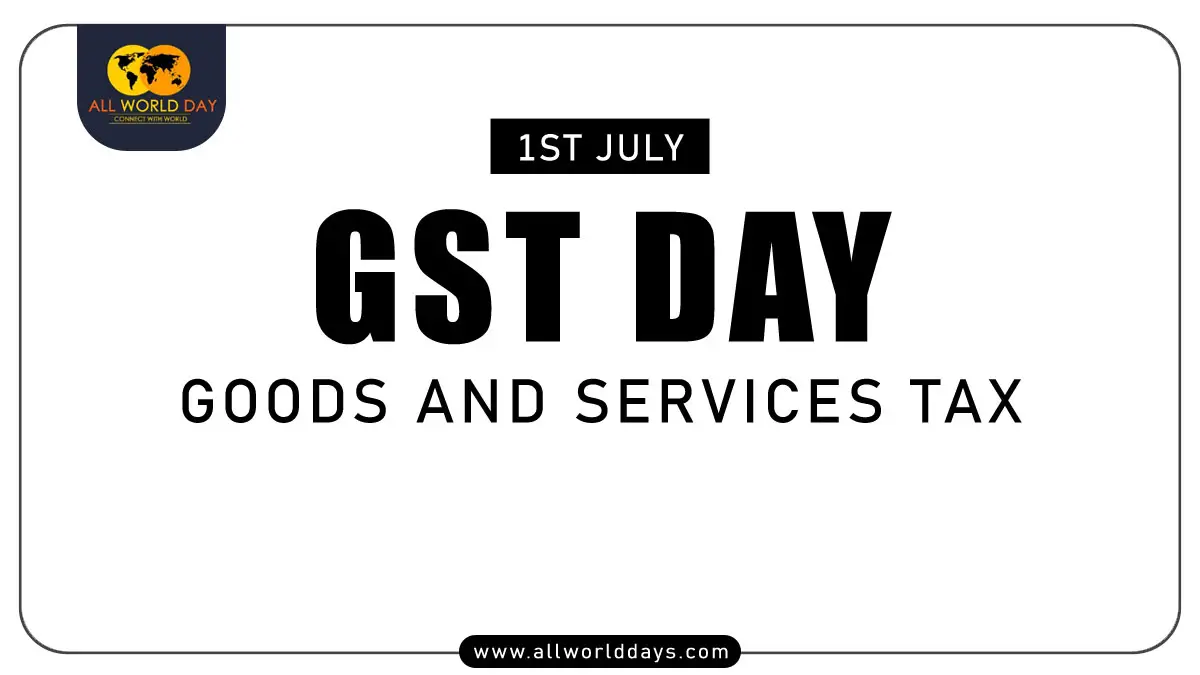India observes Goods and Services Tax Day 2024 (GST Day) on July 1st of each year to honor the anniversary of the Goods and Services Tax (GST) introduction in 2017. Commemorating seven years of one of the most revolutionary tax reforms in India’s economic history, GST Day 2024 is a momentous occasion. Understanding the effects of GST, the difficulties encountered, and the path ahead is crucial as we look back on this adventure.
The Genesis of GST
The implementation of GST on the 1st of July 2017 was a historic move that will help in simplifying and uniting multiple taxes in India. Before the implementation of GST in India, there was an expansive structure of indirect taxes which was being collected by the central as well as the state government such as the excise duty, service tax, Value Added Tax (VAT), and so forth. This fragmented system created problems such as inefficiency, tax cascading, and compliance costs. GST incorporated these many taxes into only one tax, but it was universal across the country.
The GST system was expected to improve the efficiency of the tax regime, effectiveness of collection, and revenues. The economic objectives of GST were to offer an open marketplace to improve the flow of goods and services across states.
Impact and Achievements
Following its launch, GST has been exceptional in shaping the future of India’s economy. Some of the notable achievements include:
1. Simplification and Compliance: The implementation of GST also enhanced compliance efficiency as it reduced the number of taxes. The introduction of GSTN allowed for online tax filing, thus eradicating the use of paper and establishing more efficient procedures.
2. Revenue Growth: The tax revenue collection has received a boost through the implementation of the GST. GST has ensured the enhancement of government revenues by narrowing the tax base and cutting tax avoidance measures.
3. Economic Integration: The establishment of the national market has increased the level of stock availability and decreased its length. The elimination of state boundaries in the process of taxation has made it easier to develop transport logistics and has positively affected the business environment.
4. Reduction in Tax Cascading: The ability to transfer input tax credit from one chain of supply to another has greatly reduced the accumulation of taxes, therefore relieving the consumer of the overall tax toll.
5. Boost to Manufacturing and Exports: Due to the abolishing of several taxes and making provisions simple, GST has effectively helped Indian products gain an advantage in the global market. The cost factors have been slashed which has helped boost the manufacturing business.
Challenges Faced
Though the GST program has been seen to have positive implications, its implementation was not surrounded by some challenges. The early period challenges included some technical issues witnessed at the GSTN portal, frequent changes in the tax rates, and otherwise compliance challenges. Some concerns mainly affected small and medium enterprises (SMEs) which struggled to adjust to the new taxation system.
Furthermore, the complexities that arose from the multiple tax rates within the structure of the GST were a cause for confusion. The GST Council, especially the body that formulates the tax rates and policies, had to convene meetings frequently to sort out these problems, which resulted in the GST regime experiencing a phase of transformation.
The Road Ahead
While preparing for Goods and Services Tax Day 2024, the emphasis is placed on the continuation of the positive changes that have taken place in the past seven years. The future of GST looks promising with several initiatives and reforms on the horizon:
1. GST 2.0: Currently, the government is in the process of implementing another type of value-added tax which is known as GST 2. For instance, the Goods and Service Tax Network or GSTN ‘s new model is an advanced version of an existing portal that is designed to simplify the structure of the compliance process and make it less complicated for users.
2. Unified Rate Structure: There are plans for the change in tax structure to achieve a more streamlined structure where there are fewer brackets and the structure is more certain and consistent.
3. Digital Integration: As technology continues to evolve, incorporating artificial intelligence and the use of blockchain in the GST system will lead to increased efficiency, reduction of fraud, and improvements in the processing of its layers.
4. Focus on SMEs: Sustained policy support for SMEs in the form of less regulation compliance, less regulatory hurdles, and easy availability of credit will be strategic to the growth and impact of the SMEs on the economy.
5. Enhanced Compliance and Monitoring: Improving the indicators and efficiency of the compliance tools, the utilization of enhanced information and monitoring equipment will also go a long way in reducing tax evasion.
Conclusion
In addition to commemorating a tax reform, Goods and Services Tax Day 2024 marks India’s progress toward economic integration and modernization. India’s tax system has undergone significant change as a result of the Goods and Services Tax, becoming more effective, transparent, and business-friendly. Future developments in technology, ongoing reforms, and stakeholder cooperation will be essential to realizing the full potential of the Goods and Services Tax (GST) and propelling India’s economy forward.
The commemoration of GST Day serves as a reminder of the group efforts of enterprises, citizens, and policymakers in accepting change and pursuing a more prosperous future for the economy. Let’s reiterate our resolve to make GST the cornerstone of India’s economic success as we commemorate this day.
FAQs
1. What is GST Day 2024?
GST Day commemorates the implementation of the Goods and Services Tax Day 2024 in India, which came into effect on July 1, 2017. It marks a significant tax reform that replaced multiple indirect taxes with a unified tax system.
2. When is GST Day 2024?
GST Day 2024 will be celebrated on July 1, 2024.
3. Why is GST Day important?
GST Day is important because it celebrates a major reform in India’s tax system that streamlined tax collection, reduced tax evasion, and aimed to create a common national market.
4. How has GST impacted India’s economy?
GST has simplified the tax structure, reduced the cascading effect of taxes, and increased compliance. It has also helped in the formalization of the economy and boosted revenue for both central and state governments.
5. What events held on GST Day?
GST Day marked by various events including seminars, workshops, and webinars discussing the impact of GST, its future prospects, and any new amendments or policies.
6. How can businesses benefit from GST?
Businesses benefit from GST through the elimination of multiple taxes, ease of compliance, input tax credit. And improved logistics and supply chain efficiency.
7. What are the key milestones since GST implementation?
Key milestones include the introduction of the e-way bill system, the implementation of GST e-invoicing. And the continuous refinement of GST rates and compliance procedures.
8. Where can I find resources and information about GST?
You can find resources and information about GST on the official GST portal (gst.gov.in), government publications. And through events held on GST Day.
9. How has GST evolved since its implementation?
Since its implementation, GST has seen numerous amendments to simplify the compliance process, rate rationalization. And the introduction of technology-driven solutions like e-invoicing and GST return filing portals.
10. What is the future outlook for GST in India?
The future outlook for GST in India includes further simplification of the tax system. Better compliance mechanisms, and potential expansion to include more sectors under its purview.


